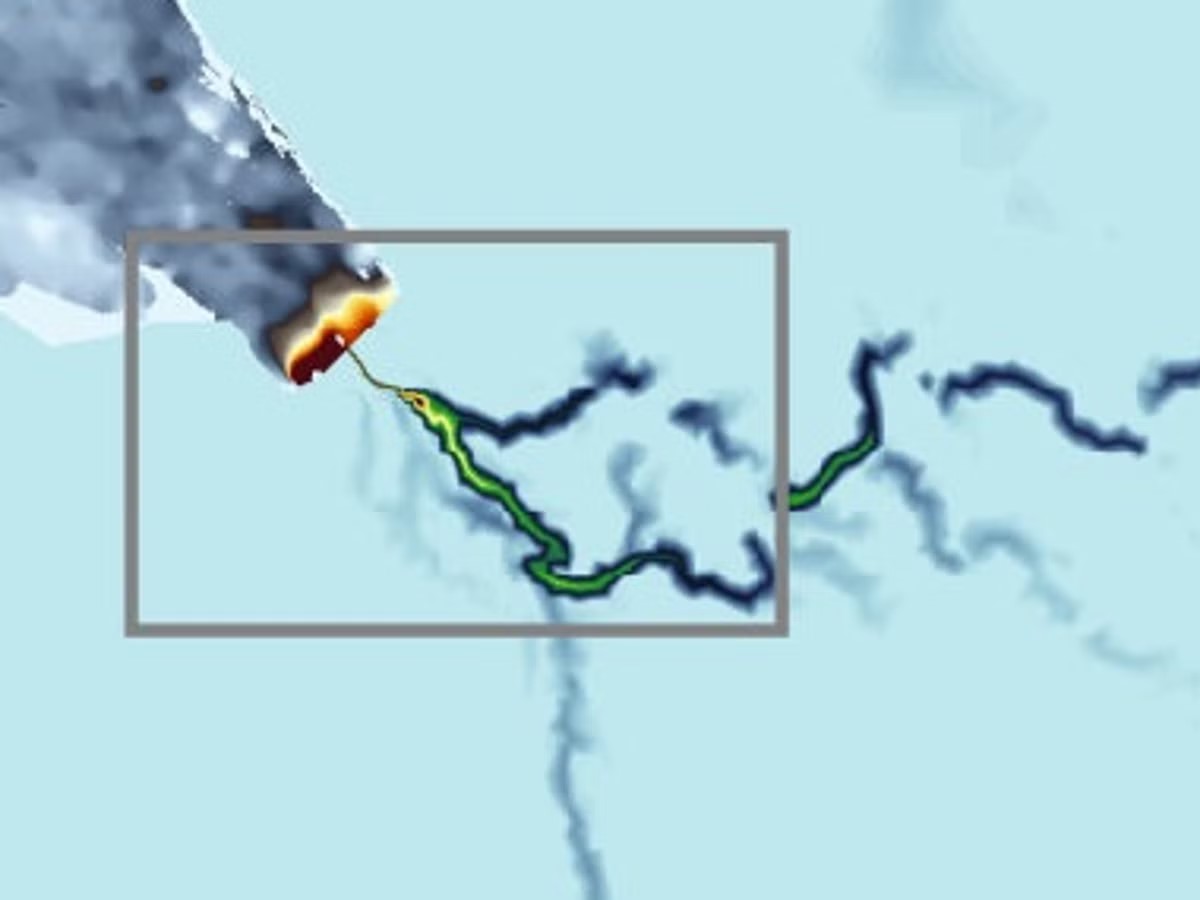
Researchers have discovered an under-ice river beneath Antarctica approximately three hundred miles long covering an area the size of France and Germany combined.
During a series of aerial surveys using an ice-penetrating radar mounted on aircraft, researchers identified the river’s system, which runs for 285 miles (460 kilometers) and drains into the Weddell Sea.
Based on statistical analysis, this under-ice river is longer than England’s Thames, but further exploration is needed to fully understand the system beneath Antarctica that seems to be interconnected by vast river networks.
Martin Siegert, the study co-author and a glaciologist at the Grantham Institute at Imperial College London, said, “When we first discovered lakes beneath the Antarctic ice a couple of decades ago, we thought they were isolated from each other.
He added that “now [we] are starting to understand there are whole systems down there, interconnected by vast river networks, just as they might be if there weren’t thousands of meters of ice on top of them.”
Siegert further noted that the identified network of flow implies that the bottom of the ice sheet is slippery, and, if it were all to melt, the drained region by the system has the capacity to raise global sea levels by 14.1 feet (4.3 meters).
The process of ice melting would not proceed gradually, however. Its response to the rate at which the planet warms creates a wave of uncertainty, with Siegert stressing that “the newly discovered river system could strongly influence this process.”
Antarctica river sits under ice masses, making it prone to melting
According to research, the system of the river sits under four slowly-flowing masses of ice vulnerable to instability in case their borders retreat inland. These include the Institute Ice Stream, the Möller Ice Stream, Support Force Glacier, and Foundation Ice Stream/Academy Glacier.
On October 27th, researchers reported that the rivers appear to flow underneath a floating ice shelf and empty into the Weddell Sea, where the melting ice has the potential to eat away at the ice shelf from below. This could lead to faster ice retreat than expected as well as to the thinning and fracturing of the ice sitting atop of the Antarctic bedrock.
Due to the friction of the ice grinding along the rock, thinner, fractured ice is anticipated to melt more quickly, hence bringing more water to the under-ice river system and further hastening the melting of the ice shelf.
Christine Dow, co-author of the study and a glacial hydrologist at the University of Waterloo, said that in order to understand how quickly Antarctica will lose ice as the climate changes, it is important to understand the dynamics and speed at which melting is likely to occur.
Dow said, “From satellite measurements we know which regions of Antarctica are losing ice, and how much, but we don’t necessarily know why.”
She added that “this discovery could be a missing link in…models” and that “[they] could be hugely underestimating how quickly the system will melt by not accounting for the influence of these river systems.”
Warming temperatures to influence Antarctica melt
According to the research paper published in the journal Nature Geoscience, just as Greenland gets warm enough to experience surface melt each summer, the warming temperatures—among other factors—could lead to Antarctica experiencing such warm conditions.
In summer months, Antarctica’s surface currently stays largely frozen. However, if it begins to get warm enough to lead to ice melting, it is likely the water will reach the Antarctic ice sheet’s base through cracks and crevices. This implies that the melting ice will, in turn, most probably cause more meltdown further below.
In a statement, study co-author Neil Ross, a glacier geophysicist at the University of Newcastle in England, said, “Previous studies have looked at the interaction between the edges of ice sheets and ocean water to determine what melting looks like.”
“However, the discovery of a river that reaches hundreds of kilometers inland driving some of these processes shows that we cannot understand the ice melt fully without considering the whole system: ice sheet, ocean, and freshwater,” Ross maintained.
See all the latest news from Greece and the world at Greekreporter.com. Contact our newsroom to report an update or send your story, photos and videos. Follow GR on Google News and subscribe here to our daily email!



